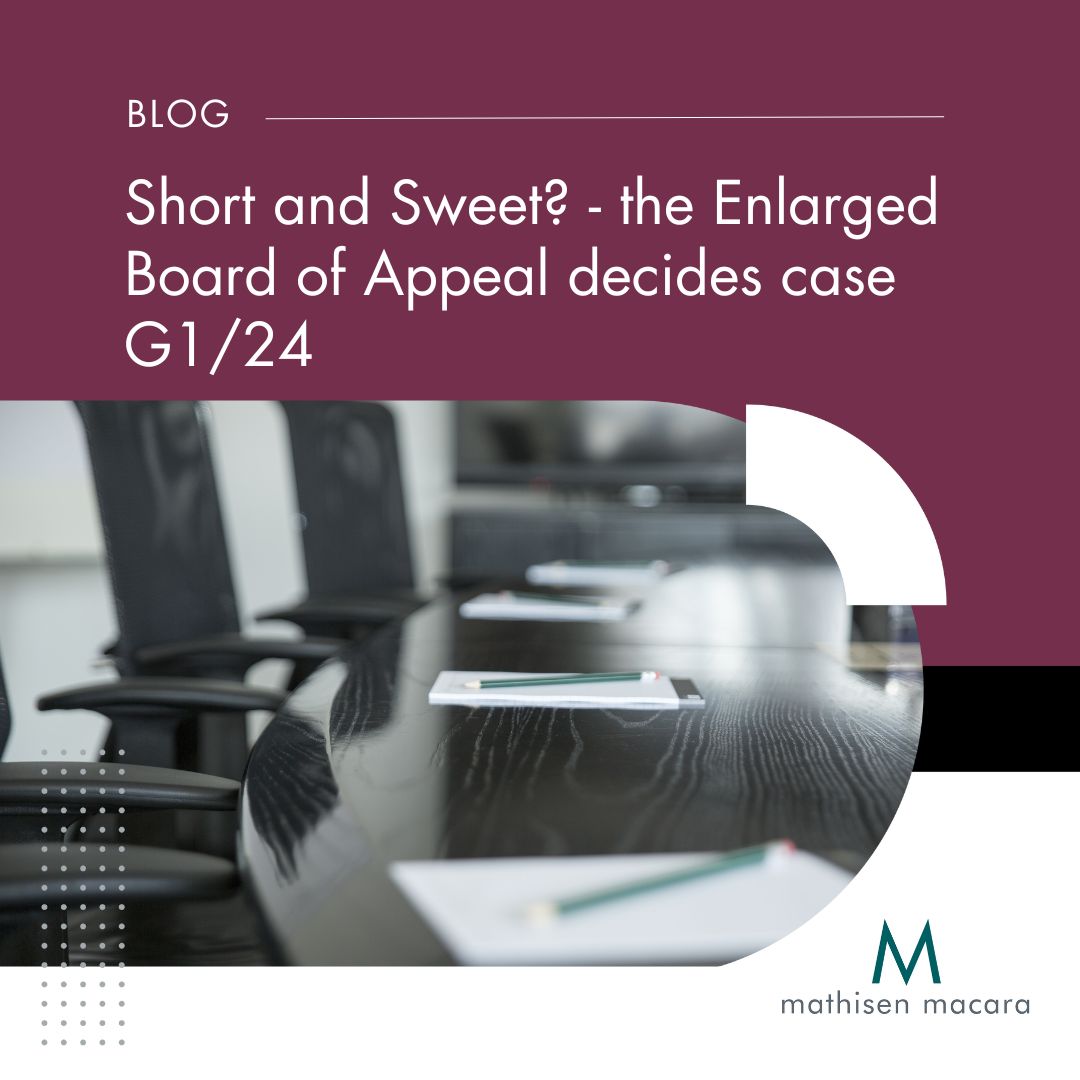Short and Sweet? - the Enlarged Board of Appeal decides case G1/24
The Enlarged Board of Appeal (EBA) of the EPO has issued its long-awaited decision in case G1/24 (Full decision here). This important case clarifies how the claims of a European patent are to be interpreted and the extent to which the description and drawings are to be consulted when doing so.
Case T0439/22 referred three questions to the EBA in G1/24:
Question 1: Is Article 69(1), second sentence, EPC and Article 1 of the Protocol on the Interpretation of Article 69 EPC to be applied to the interpretation of patent claims when assessing the patentability of an invention under Articles 52 to 57 EPC?
Question 2: May the description and figures be consulted when interpreting the claims to assess patentability and, if so, may this be done generally or only if the person skilled in the art finds a claim to be unclear or ambiguous when read in isolation?
Question 3: May a definition or similar information on a term used in the claims which is explicitly given in the description be disregarded when interpreting the claims to assess patentability, and, if so, under what conditions?
The referring case centred around a claim to a tobacco vaping device where a certain feature was described as a ‘gathered sheet’. The patentee argued that the claim would be novel if this term is assigned its usual meaning. The opponent argued that should the same term be interpreted in light of the description then it would have a broader meaning and so lack novelty. How the claim should be interpreted was thus critical to the fate of the patent.
In a remarkably brief (12 pages only) decision, the EBA came to the conclusion that:
The claims are the starting point and the basis for assessing the patentability of an invention under Article 52 to 57 EPC. The description and drawings shall always be consulted to interpret the claims when assessing the patentability of an invention under Article 52 to 57 EPC, and not only if the person skilled in the art finds a claim to be unclear or ambiguous when read in isolation.
In reaching its decision, the EBA considered both Article 69 EPC and its Protocol, and Article 84 EPC but found that neither provided entirely satisfactory basis for claim interpretation. Article 69 EPC is concerned with infringement actions before national courts and Article 84 simply concerns the content of a patent application by providing formal instructions as to what should be in the claims. The EBA thus answered Question 1 in the negative.
In answering Question 2, the EBA considered the divergence in case law whereby some Boards saw no need to refer to the description and drawings unless the claims were unclear, while others took the description into account. The EBA noted that referring to the description only in cases of unclarity or ambiguity seemed contrary to the wording and principles of Article 69 EPC and importantly, contrary to the practice of the national courts of the EPC states and of the UPC. The EBA found it to be a “most unattractive proposition” for the EPO to deliberately adopt a contrary practice to that of the tribunals that are downstream of its patents.
The answer to Question 2 was that the description a drawing must always be referred to when interpreting the claims, and not just in the case of unclarity or ambiguity.
The EBA considered Question 3 to be encompassed within Question 2 and so because an answer to Question 2 was provided, there was no need to address Question 3.
G1/24 is to be welcomed as it provides a clear and straight-forward guidance as to how the claims of European patents and applications are to be interpreted when assessing patentability under Article 52 to 57 EPC. It is also welcome from the standpoint of harmonisation between the EPO, the national courts of the EPC states and the UPC.
A note of caution, however. Towards the end of the decision, the Board leave us with the following statement:
The above considerations highlight the importance of the examining division carrying out a high quality examination of whether a claim fulfils the clarity requirements of Article 84 EPC. The correct approach to any unclarity is a claim is amendment.
There was anticipation that the EBA in G1/24 would give some guidance on the thorny issue of whether or not the description of a European patent needed to be brought into conformance with any amended claims, with some practitioners hoping for a relaxation in the EPO’s practice in this area. By highlighting the importance of clarity during examination, the EBA may have made any relaxation less likely. It will be interesting to see how the examining divisions will apply this decision going forward and to see whether objections under Article 84 EPC become more frequent.
